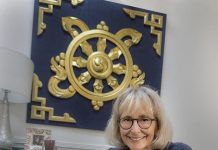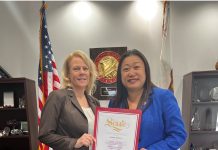Cash-flow-concerned Laguna Beach could capture eco-tourist gold to increase its revenue, former environmental committee chair Chris Prelitz told the City Council last week.
Due to its location at the ocean’s edge and cradled by hilltops and steep canyons, Prelitz suggested tapping the city’s potential as “the premiere eco-destination of Southern California” but the council and its environmental committee must first cooperate on certain long-range goals.
Lack of cooperation contributed to Prelitz’s decision not to reapply for another term last month, along with five of the other seven members of the volunteer environmental committee. As one of the city’s leading proponents of “green” policies, Prelitz said feeling frustrated became too great a constant.
“The environmental committee makes recommendations to council and then they go through the city staff process and that process takes quite a long time and can dilute what we recommend,” said Prelitz, a LEED-accredited professional who built Laguna’s first partial straw-bale home and author of “Green Made Easy.”
City Manager John Pietig countered by saying that the committee created to consider environment-enhancing goals has received as much attention to its requests as the city can afford.
“They’re a passionate group with a lot of ideas,” Pietig acknowledged. “The city has made a lot of progress with environmental issues.” Pietig listed several germane projects, including the adopted U.S. Mayors’ Climate Protection Agreement to reduce greenhouse gases, new city ordinances that ban the use of Styrofoam and plastic bags, and low-wattage night-lighting recommendations for businesses and residences. He also cited the hybrid-vehicle-charging station downtown, recently approved bike racks, bike right-of-way street symbols in north Laguna and sustainable building guidebooks available for purchase at City Hall.
Over the last year, the council has implemented a new agenda practice of allowing each city committee and subcommittee to give a five-minute presentation on its accomplishments, problems and progress.
One of the two remaining committee members, Sharael Kohlberg, said the environmental consortium wasn’t cohesive anyway. “I’d like us to work on projects that the City Council and the residents want us to work on rather than working on our own agendas of what we want to get done personally,” said Kohlberg, who has served half of her two-year term.
Another committee member requesting anonymity said every idea presented so far has been delayed at City Hall on the repeated reason of “no money.”
But there’s money for other projects, committee proponents argued, singling out the $300,000 divvied up at the same council meeting for a variety of Complete Streets projects that make Laguna streets more accommodating to bicyclists, runners, walkers and skateboarders.
“Besides Complete Streets, there’s no funding for any environmental projects,” asserted Prelitz.
By using the same positioning as a destination for art enthusiasts, Laguna Beach could also be poised as a resort city dedicated to healthy activities and ecological practices to boost its economy, environmental proponents suggested. Increasing eco-tourism would bring new sustainably minded businesses, broadening the town’s economic base and filling vacant storefronts, Prelitz said. “But, it will take more than lip service” to attract new businesses, he said.
Prelitz’s suggested long-range goals are to make Laguna more environmentally sustainable as well as an eco-destination by partnering with the Visitors’ Bureau to promote eco-tourism. He pointed to a new demographic group known by the acronym LOHAS, which stands for Lifestyle of Health and Sustainability. According to the Natural Marketing Institute, LOHAS consumers constitute 20% of the U.S. population but affect a much wider segment.
“It’s a large marketing segment and we’re literally missing that population,” Prelitz told the council. “They want to go somewhere where they have all we have plus the safe bike routes, organic restaurants and sustainable energy sources. We just need to add those.”
Theresa Cordova, who trained McDonald’s franchise owners for 18 years, said branding Laguna Beach as an eco-destination could bring an economic boom. “Be as distinguished in food as you are in art,” she urged the council.
Other proponents suggested partnering with the Great Park farm in Irvine as well as in-town community gardens to provide locally grown organic produce, harvesting rainwater, increasing the number of electric car-charging stations, adding solar panels to city buildings and continuing the bike route marked by “sharrows” (share-the-road arrows) from north to south.
The council also agreed to allocate $300,000 included in this year’s budget towards Complete Street projects. Councilwoman Elizabeth Pearson objected to spending more on studies than tangible projects. “There are $250,000 in studies recommended and only $30,000 in actual implementation items,” she said.
Projects include a GPS system for summer trolleys, Ocean Avenue and Forest Lane bike racks, a pathway connecting Top of the World and Arch Beach Heights, continuing sharrows to indicate bicyclists’ right-of-way on Glenneyre Street and studies for footpaths in Temple Hills. The council appropriated $5,000 of the total amount earlier for sharrows in north Laguna.
City Manager Pietig said studies are needed to prepare designs and applications for state and federal grants.





I blog about green travel & I love San Francisco because it has many green tours. I also like Santa Monica (first to ban plastic bags & its Farmers Market).